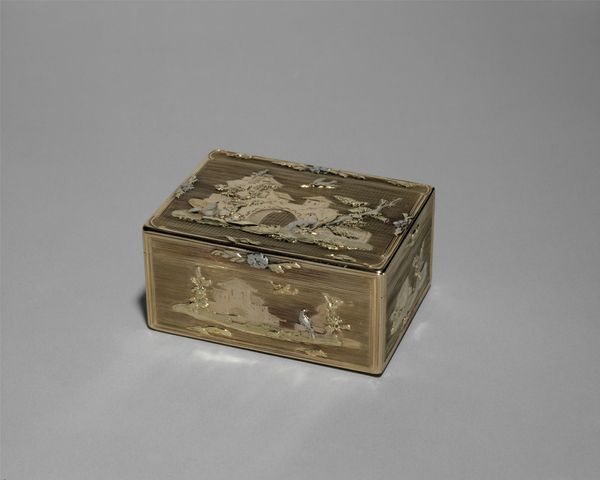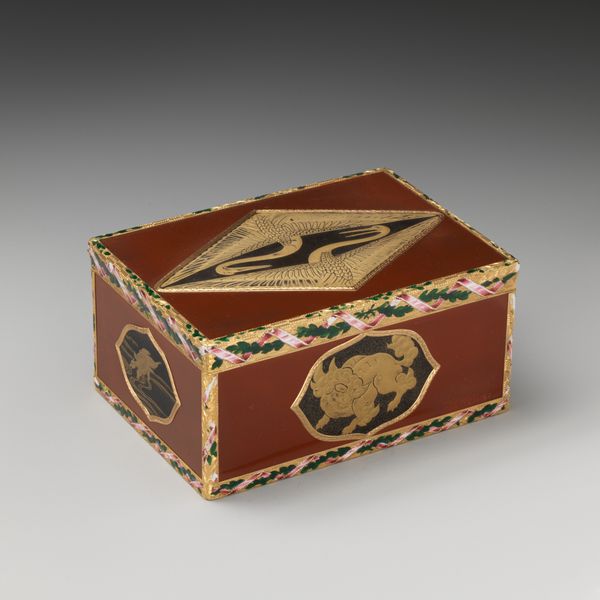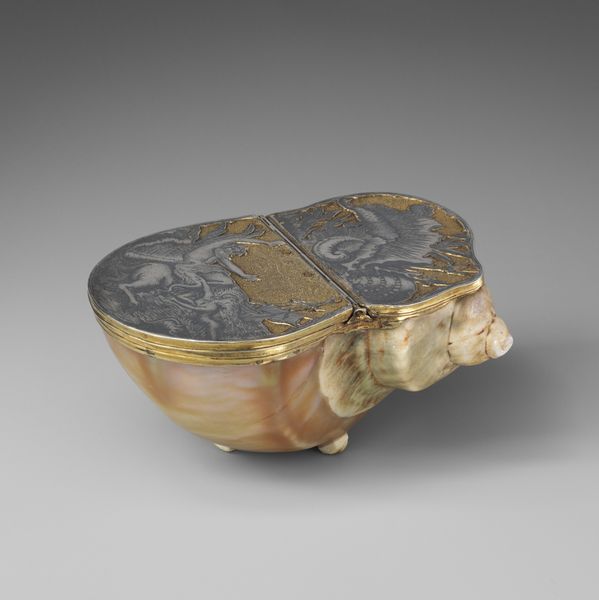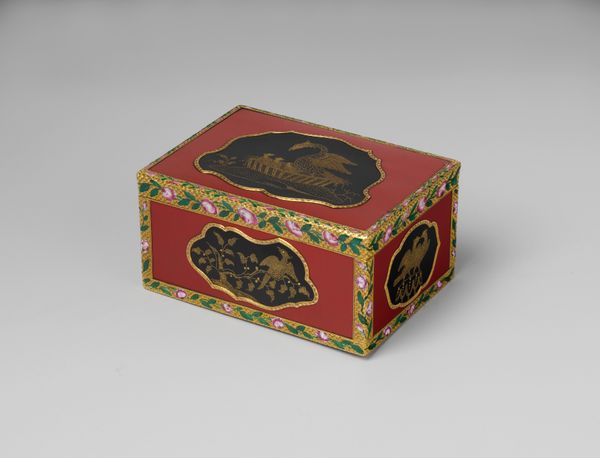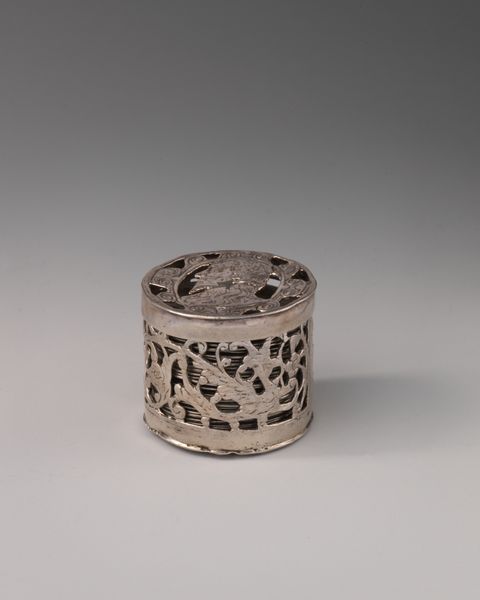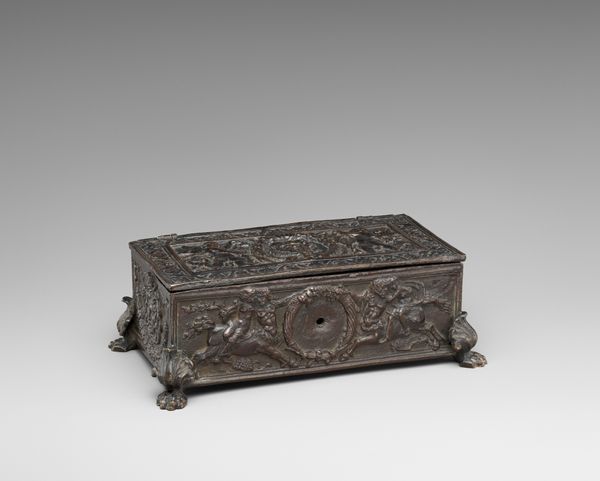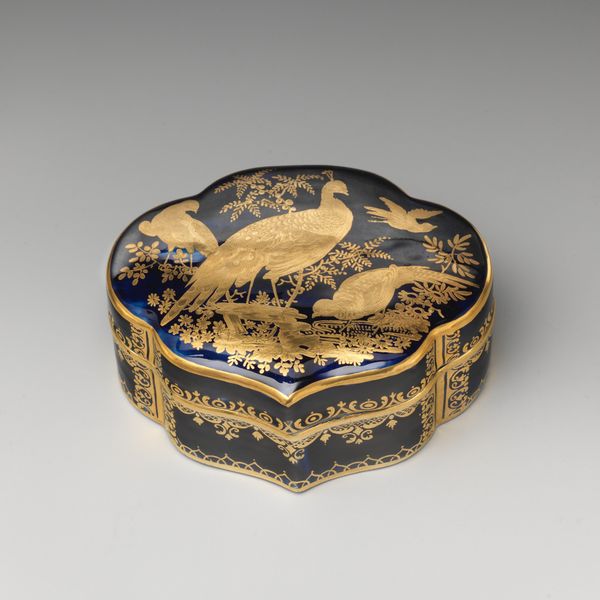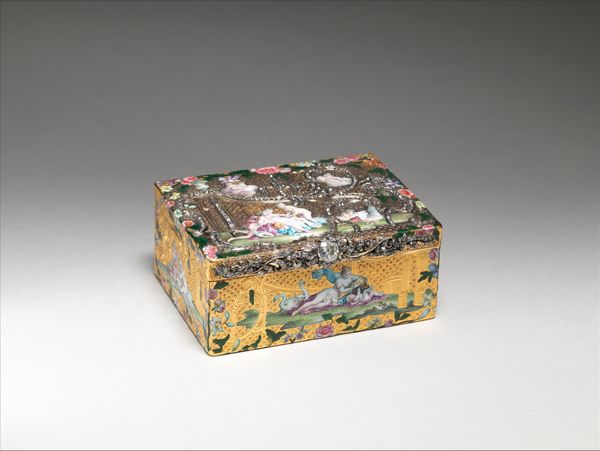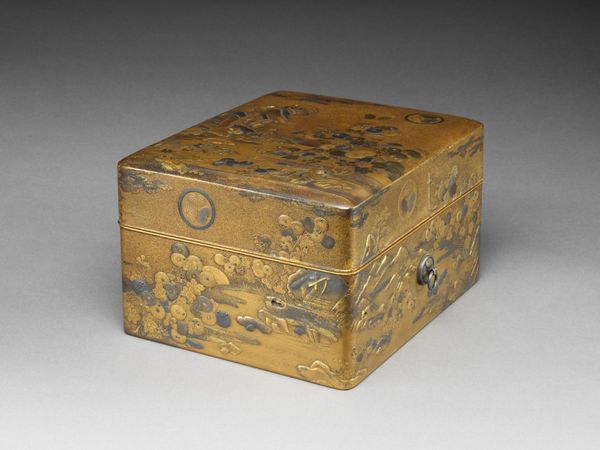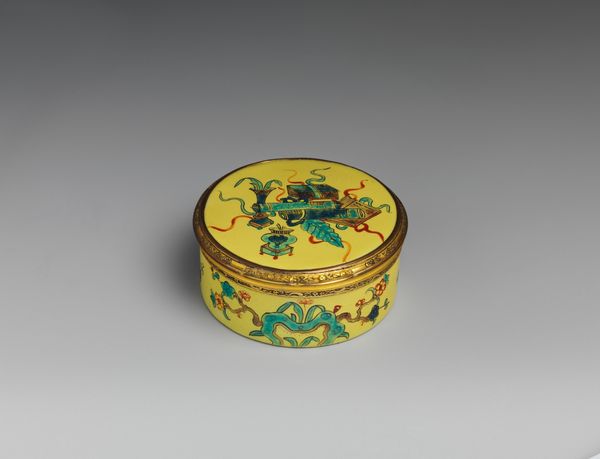
metal, sculpture
#
portrait
#
metal
#
sculpture
#
decorative-art
#
miniature
#
rococo
Dimensions: Overall: 1 5/8 × 3 1/4 × 2 5/8 in. (4.1 × 8.3 × 6.7 cm)
Copyright: Public Domain
Editor: Here we have Daniel Baudesson's "Snuffbox" from sometime between 1750 and 1760. It's metal and a beautiful piece of decorative art. The miniatures and gold-like elements give off an air of royalty, don't you think? What are your thoughts on its materiality and function within the era? Curator: It's not merely the depiction of royalty, but the _embodiment_ of a specific mode of consumption. The metalwork speaks to intense, skilled labor. Each stage—mining, refining, crafting, decorating with those miniature scenes—represents a vast network of workers. Consider the social stratification inherent in its production and ownership. Editor: So, rather than admiring its artistic finesse alone, we should reflect on its creation within a capitalist frame? Curator: Exactly! We must acknowledge that Rococo excess, while visually stunning, was fuelled by intense extraction and a complex, often brutal, labor system. It's a material testament to the distribution of wealth. Editor: That is interesting because I never thought about the intense production of art pieces; only the final product and the aesthetic value caught my attention. How does this affect our views about contemporary artwork? Curator: We should be critically aware of _how_ objects are produced now. What materials, what labor, and to what environmental cost? Analyzing art requires examining the ethics and implications of the entire process. It's not just about aesthetics; it's about understanding the full material life cycle of art. Editor: This completely reframes how I'll look at art from now on. Thanks for helping me view it within this social, economic, and production-focused context.
Comments
No comments
Be the first to comment and join the conversation on the ultimate creative platform.
